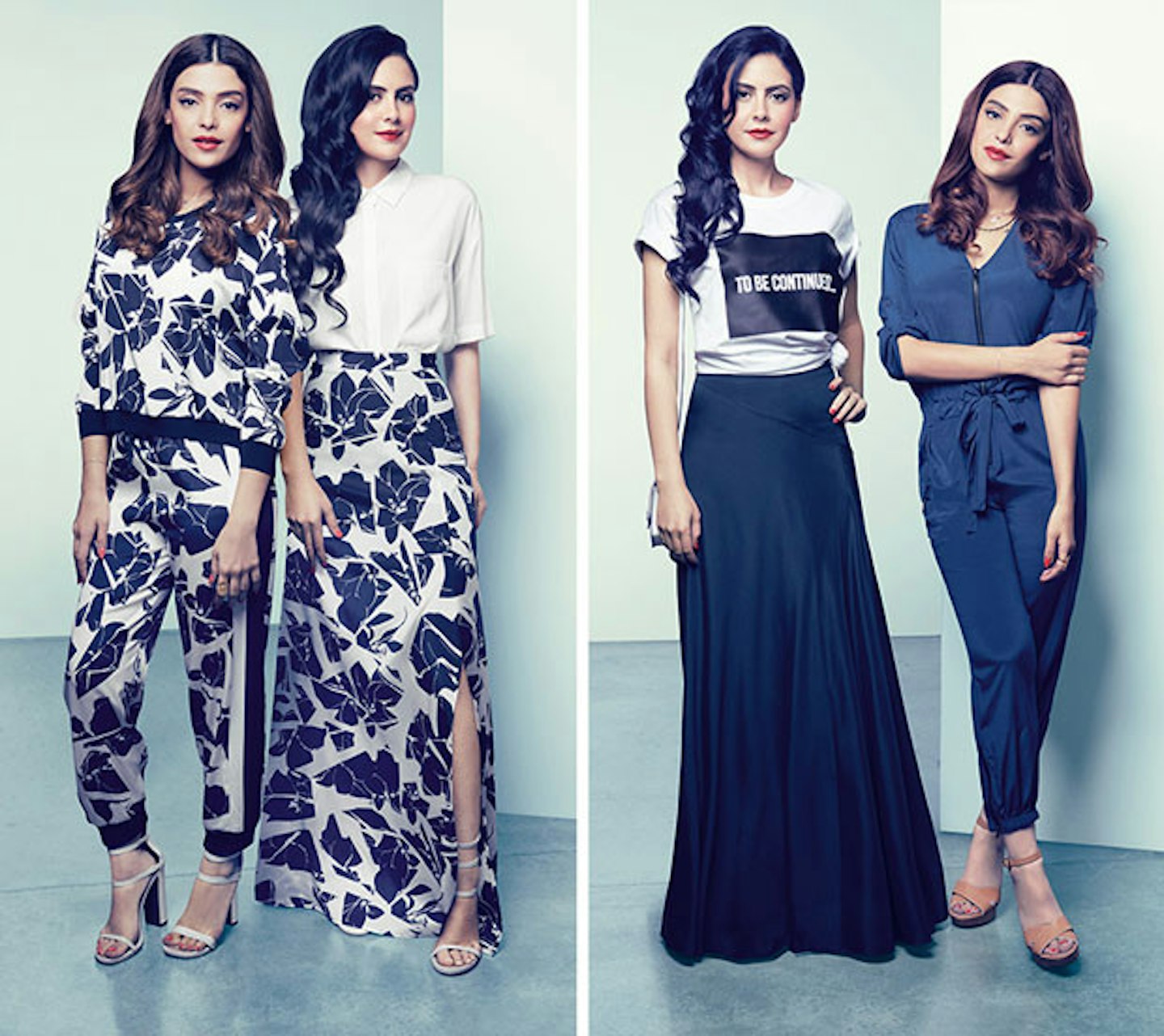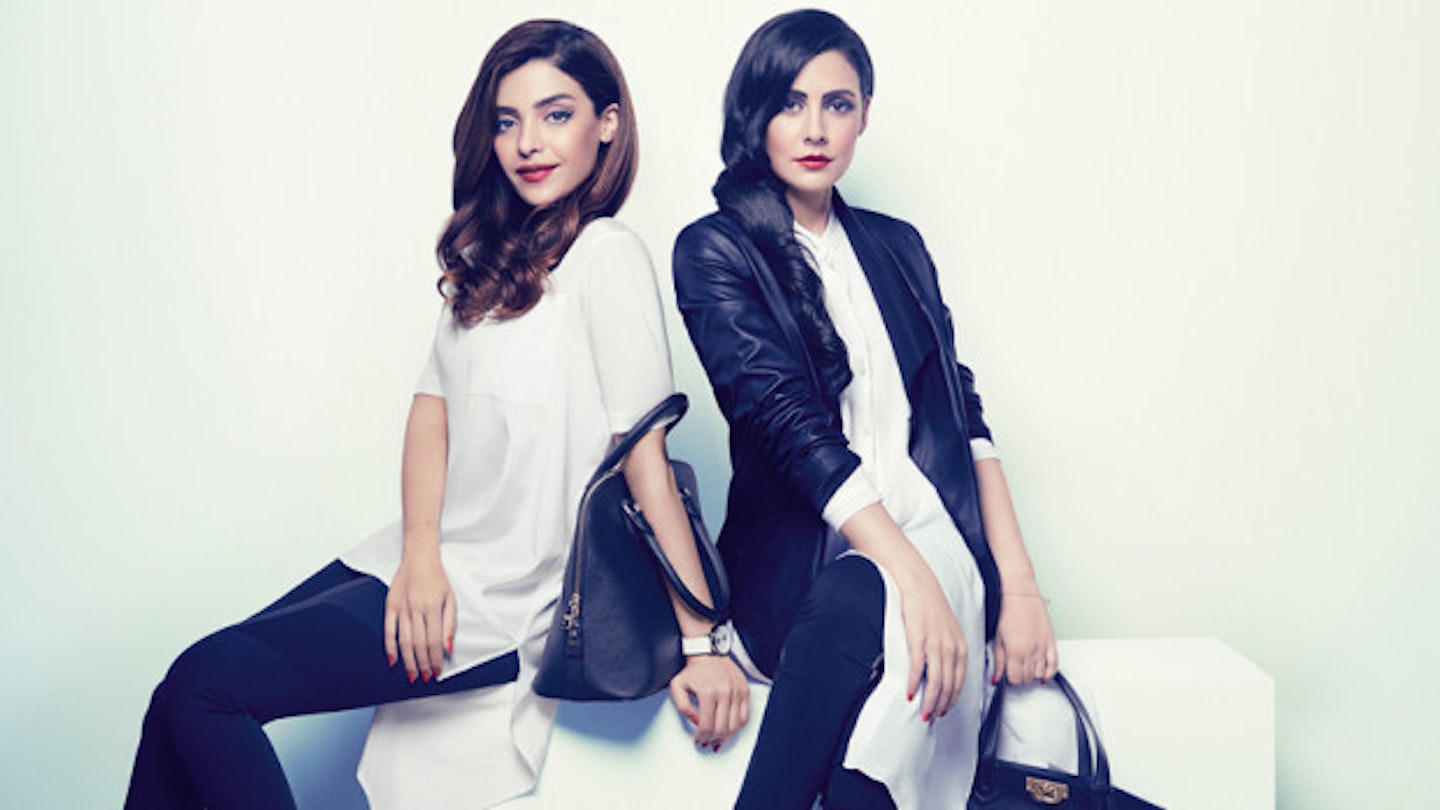Last week, Pakistani writer Bina Shah wrote a piece for The Independent, where she praised DKNY’s new Ramadan capsule collection for Muslim women (available only in the Middle East).
With a focus on modest glamour – think long flowing pieces, in rich silks and monochrome leather – what really makes it a hit, wrote Bina, was that the two stylists that worked on and modelled in the 12-piece collection, ‘were two Middle Eastern women: Yaya Golsharifi, fashion editor of Styles Magazine; and Tama Al Gabbani, a fashion designer in Dubai.’
Defending DKNY against criticism that they had used a religious festival to peddle clothes, Bina writes: ‘You’ve clearly never been to Pakistan, where I live [in Karachi]. Entire clothing lines, such as the wildly popular Junaid Jamshed men’s stores, are based on meeting Islamic guidelines and use Muslin terminology and phrases to motivate people to buy the clothes.’

Bina’s op-ed blog post soon went viral with some conservative Muslim commentators claiming that devout Muslim women have no time for fashion, while others stated that we should be rejecting the traditional parameters of Islamic dress completely.
‘I’m glad to have supported it, and in doing so shown closed-minded people that the alternative to burqa/niqab is NOT nudity, as they like to vomit out as often as they can,’ Bina wrote on her blog, afterwards.
In light of the European Court’s decision to uphold the French ban on the niqab, The Debrief caught up with Bina to discuss what this means for Muslim women.
**The Debrief: Thank you so much for speaking with us Bina. **Do you see DKNY’s Ramadan collection as just the start of Western fashion embracing Islamic dress? We recently interviewed a Welsh fashion designer who is trying to do something similar, albeit on a smaller scale.
Bina Shah: DKNY is far from the first, actually. All haute couture design labels have had items that cater to the Middle Eastern market – for example, I bought a Bvlgari perfume called Oud Absolu which isn’t available anywhere else. YSL designed Pakistan International Airline’s flight attendant uniforms in the 1960s. These collaborations have been going on for a long time.
The DKNY Ramadan collection has been the one that’s made the biggest splash because it’s the first full collection aimed at such a specific region, and the inclusion of the Ramadan theme. But Middle Eastern and Muslim women have been wearing Western fashion for decades. It’s about time Western fashion designers paid attention to this and collaborated – it could be the start of some very exciting trends.
DB: In your Independent piece, you cite DKNY’s Ramadan line as ‘a lovely way to bring Muslim customers to mainstream attention’. Are you against the burqa?
**BS: **I’m not in favour of imposing laws that dictate the way women dress. I have never worn a burqa, but were I to perform the Hajj [an Islamic pilgrammage to Mecca and the largest global gathering of Muslims] in Saudi Arabia, I would be required to adopt the dress code – which isn’t necessarily all black from head to toe, but requires covering everything except face and hands.
You could pair a blue abaya, or overcoat, for example, with a white scarf for the head. That’s possibly the* one* exception I would make, where I would wear the burqa.
DB: And what do you make of France’s ban on the niqab?
BS: I understand all the reasons for France’s niqab ban, particularly the desire on the part of the French establishment to limit the expression of political Islam through women’s dress, among other things. It was explained to me in Karachi by France’s Consul General and it made sense – that France doesn’t want to encourage religious symbols in their schools and government buildings, that covering the face is a security issue (to me a rather superficial excuse for the ban, as most of the niqab-wearing women in France are willing to remove it for identification purposes).
But I think they could have achieved their goal of limiting this expression in a more sane manner, rather than coming down punitively with fines – after all it’s a very small minority of Muslim women who adhere to the outfit.
**DB: The global approach to the niqab is not homogenous, is it? **
BS: I’ve seen all varieties of burqa and niqab. For example, in the Gulf States of the Middle East, some women will wear Western designer wear (including mini skirts) underneath the burqa, which they proudly wear and throw it off when inside private homes or when travelling to the West.
In Afghanistan, of course, it was the symbol for the Taliban’s misogynist repression of women and the blue burqa, also known as the ‘shuttlecock’ for its distinctive shape, has been represented very movingly in visual art – paintings, photographs and sculpture – to make a statement about what women go through even today in that country.
In Pakistan, where I live, women wear it to be pious, but will decorate it with crystals, sequins, and other baubles, customising it so they can express themselves even within the limitations.
DB: How do you feel when we describe Islamic dress as if it was one static style?
BS: Islam is not a monolith – and Muslim women were never meant to have a uniform. The burqa and niqab, which really are not prescribed in any specific way in the Quran, are far more cultural expressions, and these days, political expressions as well – of women’s varied statuses and experiences across the Muslim world.
Follow Pandora on Twitter @pinsykes
This article originally appeared on The Debrief.
